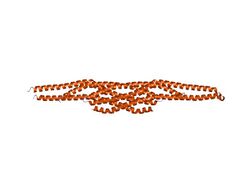Biology:IMD domain
| IRSp53/MIM homology domain | |||||||||
|---|---|---|---|---|---|---|---|---|---|
 crystal structure of rcb domain of irsp53 | |||||||||
| Identifiers | |||||||||
| Symbol | IMD | ||||||||
| Pfam | PF08397 | ||||||||
| Pfam clan | CL0145 | ||||||||
| InterPro | IPR013606 | ||||||||
| |||||||||
In molecular biology, the IMD domain (IRSp53 and MIM (missing in metastases) homology Domain) is a BAR-like domain of approximately 250 amino acids found at the N-terminus in the insulin receptor tyrosine kinase substrate p53 (IRSp53/BAIAP2) and in the evolutionarily related IRSp53/MIM (MTSS1) family. In IRSp53, a ubiquitous regulator of the actin cytoskeleton, the IMD domain acts as conserved F-actin bundling domain involved in filopodium formation. Filopodium-inducing IMD activity is regulated by Cdc42 and Rac1 (Rho-family GTPases) and is SH3-independent.[1][2][3] The IRSp53/MIM family is a novel F-actin bundling protein family that includes invertebrate relatives:
- Vertebrate MIM (missing in metastasis) (MTSS1), an actin-binding scaffold protein that may be involved in cancer metastasis.
- Vertebrate ABBA-1 (MTSS1L), a MIM-related protein.
- Vertebrate brain-specific angiogenesis inhibitor 1-associated protein 2 (BAI1-associated protein 2) or insulin receptor tyrosine kinase substrate p53 (IRSp53), a multifunctional adaptor protein that links Rac1 with a Wiskott–Aldrich syndrome family verprolin-homologous protein 2 (WAVE2/WASF2) to induce lamellipodia or Cdc42 with Mena to induce filopodia.[4]
- Vertebrate brain-specific angiogenesis inhibitor 1-associated protein 2-like proteins 1 and 2 (BAI1-associated protein 2-like proteins 1 and 2, BAIAP2L1 and BAIAP2L2).
- Drosophila melanogaster (Fruit fly) CG32082-PA.
- Caenorhabditis elegans M04F3.5 protein.
The vertebrate IRSp53/MIM family is divided into two major groups: the IRSp53 subfamily and the MIM/ABBA subfamily. The putative invertebrate homologues are positioned between them. The IRSp53 subfamily members contain an SH3 domain, and the MIM/ABBA subfamily proteins contain a WH2 (WASP-homology 2) domain. The vertebrate SH3-containing subfamily is further divided into three groups according to the presence or absence of the WWB and the half-CRIB motif. The IMD domain can bind to and bundle actin filaments, bind to membranes and interact with the small GTPase Rac.[1][5]
The IMD domain folds as a coiled coil of three extended alpha-helices and a shorter C-terminal helix. Helix 4 packs tightly against the other three helices, and thus represents an integral part of the domain. The fold of the IMD domain closely resembles that of the BAR (Bin-Amphiphysin-RVS) domain, a functional module serving both as a sensor and inducer of membrane curvature.[3] The IMD domain is also known as the I-BAR domain because of its inverse curvature of the membrane binding surface compared to that of the BAR domain. The WH2 domain performs a scaffolding function.[6]
References
- ↑ 1.0 1.1 "A novel actin bundling/filopodium-forming domain conserved in insulin receptor tyrosine kinase substrate p53 and missing in metastasis protein". J. Biol. Chem. 279 (15): 14929–36. April 2004. doi:10.1074/jbc.M309408200. PMID 14752106.
- ↑ "Characterisation of IRTKS, a novel IRSp53/MIM family actin regulator with distinct filament bundling properties". J. Cell Sci. 120 (Pt 9): 1663–72. May 2007. doi:10.1242/jcs.001776. PMID 17430976.
- ↑ 3.0 3.1 "Structural basis of filopodia formation induced by the IRSp53/MIM homology domain of human IRSp53". EMBO J. 24 (2): 240–50. January 2005. doi:10.1038/sj.emboj.7600535. PMID 15635447.
- ↑ "Extracellular fragment of brain-specific angiogenesis inhibitor 1 suppresses endothelial cell proliferation by blocking alphavbeta5 integrin". Exp. Cell Res. 294 (1): 172–84. March 2004. doi:10.1016/j.yexcr.2003.11.008. PMID 14980512.
- ↑ "MIM: a multifunctional scaffold protein". J. Mol. Med. 85 (6): 569–76. June 2007. doi:10.1007/s00109-007-0207-0. PMID 17497115.
- ↑ "Structural basis for the actin-binding function of missing-in-metastasis". Structure 15 (2): 145–55. February 2007. doi:10.1016/j.str.2006.12.005. PMID 17292833.
 |

